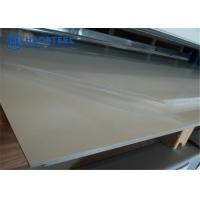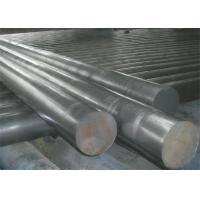Alloy 59 N06059 nickel base alloy bar pipe plate wire coil Alloy
600 601 617 625 718 X-750 800 800H 900 926
Nickel-based alloys are alloys that have a combination of high
strength and certain resistance to oxidation and corrosion at high
temperatures of 650 to 1000 °C. According to the main performance,
it is subdivided into nickel-based heat-resistant alloy,
nickel-based corrosion-resistant alloy, nickel-based wear-resistant
alloy, nickel-based precision alloy and nickel-based shape memory
alloy. Superalloys are classified into iron-based superalloys,
nickel-based superalloys and cobalt-based superalloys according to
the matrix. Among them, nickel-based superalloys are referred to as
nickel-based alloys.
Alloy 59 (N06059) Nickel-Based Alloy Overview:
Alloy 59 (N06059) Nickel-based alloy is a
nickel-chromium-molybdenum alloy with extremely low silicon and
carbon content, excellent corrosion resistance and high mechanical
strength. Alloy 59 (N06059) nickel-based alloy has no tendency to
precipitate out of impurities during hot working and welding, so it
is suitable for various chemical process industries containing
oxidizing and reducing media. The higher molybdenum and chromium
content makes the alloy resistant to chloride ions. Alloy 59
(N06059) nickel based alloy has the following characteristics:
1. Excellent resistance to pitting corrosion, crevice corrosion and
chloride corrosion-induced cracking.
2. Excellent corrosion resistance to inorganic acids such as nitric
acid, phosphoric acid, sulfuric acid and hydrochloric acid,
especially for the mixing of sulfuric acid and hydrochloric acid.
3. Excellent resistance to corrosion of various inorganic acid
mixed solutions.
4. Good corrosion resistance in various concentrations of
hydrochloric acid solutions up to 40 ° C (104 ° F).
5, has good workability and weldability, no post-weld cracking
sensitivity.
6. Manufacturing certification for pressure vessels with wall
temperatures between -196 and 450 °C.
7. The NACE Standard Certification (MR-01-75) of the American
Society of Corrosion Engineers meets the highest standard grade VII
for use in acid gas environments.
Alloy 59 grades and standards:
Alloy 59 nickel base alloy US brand: UNS N06059 German brand:
2.4605
Complete specifications, stock in stock
Strip, sheet (thick plate, medium plate, sheet, steel plate), bar
(black bar, light bar, grinding bar, round bar, square bar, steel
bar), pipe (capillary, seamless pipe, steel pipe), Forgings
(flanges, elbows, bolts, nuts, tees), welding consumables (welding
rods, welding wire, welded pipes), wire and other materials.
Chemical Composition Of Alloy 59 nickel base alloy
| C≤ | Si≤ | Mn≤ | P≤ | S≤ | Cr≥ | Ni≥ | Mo≥ | Cu≤ |
| 0.01 | 0.10 | 0.50 | 0.015 | 0.010 | 22.0-24.0 | Re | 15.0-16.5 | 0.50 |
| N≤ | Al≤ | Ti≤ | Fe≤ | Co≤ | V≤ | W≤ | Nb+Ta |
| 0.10-0.40 | | 1.50 | 0.30 | | | |
Mechanical properties of Alloy 59 ( N06059) nickel base alloy:
1. Alloy 59 (N06059) nickel base alloy density: 8.6g/cm3
2, Alloy 59 (N06059) nickel-based alloy melting point: 1310-1360 °
C
3, Alloy 59 (N06059) nickel-based alloy tensile strength: σ0.2 ≥
690Mpa,
4. Alloy 59 (N06059) nickel base alloy yield strength: σb ≥ 340Mpa,
5, Alloy 59 (N06059) nickel-based alloy elongation: δ ≥ 40,
Alloy 59 (N06059) nickel base alloy corrosion resistance:
1. Alloy 59 (N06059) Nickel-based alloy has a very low carbon and
silicon content, and has no tendency to precipitate out of
impurities during hot working and welding. Therefore, it is
suitable for various chemical process industries containing
oxidizing and reducing media. The higher molybdenum and chromium
content makes the alloy resistant to chloride ions.
2. Alloy 59 (N06059) Nickel-based alloy In the standard corrosion
test of most oxidizing environments, the performance of Nicrofer
5923 hMo is higher than that of other Ni-Cr-Mo stainless steel.
Alloy 59 (N06059) nickel-based alloys are more than three times
less corrosive in some reducing environments (such as boiling 10%
sulfuric acid) than conventional Ni-Cr-Mo stainless steels, and are
also suitable for use in the chemical process industry for reducing
environments. Alloy 59 (N06059) nickel-based alloy has excellent
corrosion resistance in hydrochloric acid.
3, Alloy 59 (N06059) nickel-based alloy material can only have the
best corrosion resistance in the appropriate metallographic state
and pure crystal structure.
Specifications
| Product Name | Alloy 59 N06059 nickel base alloy bar pipe plate wire coil |
| Production Process | Cold Drawn,Cold Rolled,Hot Rolled,Bright Anneal etc |
| Size | 5.5-800mm(Hot rolled), 2-50mm(Cold drawn),110-500mm(Forged) |
| Standard | ASTM EN DIN GB ISO JIS |
| Tolerance | +/-0.05 ~+/0.02 |
Surface
| Pickling,Bright; No.1,2B,No.4,BA,8K
Satin,Brush,Hairline,Mirror,Polished
180 grits,320 grits,400 grits,600 grits,800 grits polished |
| Application | Constructions feilds and ship building industries
Petroleum,Chemical industries,War and electiciy industries. Food
processing and medical industries. Boiler heat cxchangers,Machinery
and hardware feilds. |
| Materials | Titanium alloy:TI-6AL-4V,TI-5AL-2.5SN,TA1,TA2,TA3,TA4,TA0,TC4 200series:201 202
300series:301,303Cu,304 304L 304H,304H,309S,310,310S,316
316L,316H,316Ti,321,347, 347H,330
400 series:
409L,410,410S,416F,420,420J1,420J2,430,431,440C,441,444,446,
600 series: 13-8ph,15-5ph,17-4ph,17-7ph(630,631),660A/B/C/D,
Duplex: 2205(UNS S31803/S32205),2507(UNS S32750),UNS
S32760,2304,LDX2101.LDX2404,LDX4404,904L
Others: 153Ma,254SMo,253Ma,654SMo,F15,Invar36,1J22,N4,N6 etc
Alloy : Alloy 20, Alloy28, Alloy31;
Hastelloy: Hastelloy B, Hastelloy B-2,Hastelloy B-3,Hastelloy C,Hastelloy C22,Hastelloy C-4,Hastelloy S,Hastelloy C276,Hastelloy
C-2000, Hastelloy G-35, Hastelloy G-30/X/N;
Haynes: Haynes 230, Haynes 556, Haynes 188;
Inconel: Inconel 100/600/601/602CA/617/625713/718738/X-750;
Incoloy: Incoloy 800/800H/800HT/825/925/926;
GH: GH2132,GH3030,GH3039,GH3128,GH4180,GH3044
Monel: Monel 400/K500
Nitronic: Nitronic 40/50/60;
Nimonic: Nimonic 75/80A/90 ; |
Alloy 59 (N06059) nickel-based alloy processing and heat treatment:
Alloy 59 (N06059) nickel-based alloys have excellent cold, hot work
and machinability.
1, heating:
(1) Keep the workpiece clean and free of contamination before heat
treatment and during heat treatment.
(2), can not contact sulfur, phosphorus, lead and other low melting
point metals during the heat treatment, otherwise it will damage
the performance of Alloy 59 (N06059) alloy, should pay attention to
remove such as marking paint, temperature indicating paint, colored
crayons, lubricating oil, Contaminants such as fuel.
(3) The lower the sulfur content in the fuel, the better, the
sulfur content in natural gas should be less than 0.1%, and the
sulfur content in heavy oil should be less than 0.5%.
(4) It is preferable to carry out heat treatment in a vacuum
furnace or a gas protection furnace in consideration of temperature
control and maintenance of cleaning.
(5) It can also be heated in a box furnace or a gas furnace, but
the furnace gas must be clean and neutral to slightly oxidizing,
and the furnace gas should be prevented from fluctuating between
oxidizing and reducing properties. The heating flame cannot be
directly Burn to the workpiece.
2, thermal processing:
(1) Alloy 59 (N06059) alloy has a hot working temperature range of
1180 ° C to 950 ° C. The cooling method is water cooling or rapid
air cooling.
(2) In order to ensure the best anti-corrosion performance, heat
treatment should be carried out after hot working, and the
workpiece should be directly added to the heat-treated furnace.
3. Cold processing:
(1) Alloy 59 (N06059) alloy has a higher work hardening rate than
austenitic stainless steel, so it is necessary to select processing
equipment. The workpiece should be annealed and there should be an
intermediate anneal during the cold rolling process.
(2) If the cold rolling deformation is greater than 15%, the
workpiece needs to be solution treated.
4, heat treatment:
(1) The alloy solution temperature of Alloy 59 (N06059) alloy is in
the range of 1100 ° C to 1180 ° C.
(2) For materials with a thickness less than 1.5mm, it is
recommended to use water cooling or rapid air cooling to ensure the
best corrosion resistance.
(3) In all heat treatment processes, the workpiece should be
directly added to the heated heat treatment furnace, and the
workpiece must be kept clean.
5, descaling:
(1) The adhesion of the surface oxide of Alloy 59 (N06059) alloy to
the weld slag around the weld is stronger than that of stainless
steel. It is recommended to use fine-grained abrasive belt or
fine-grained grinding wheel for grinding.
(2) The oxide film must be broken by careful sanding or salt bath
pretreatment before the appropriate time and temperature pickling
with HNO3/HF mixed acid.
6. Machining: Alloy 59 (N06059) alloy should be machined after heat treatment.
Due to the work hardening of the material, it is better to use a
lower cutting speed and heavy feed knife for processing low alloy
standard austenitic stainless steel. Under the surface of the cold
hardened surface.
7. Recommendations for welding: When welding nickel-based materials, the following procedures
should be followed:
(1) Workplace The work site should be separated separately or at a
sufficient distance from the processing area of carbon steel. Keep
it as clean as possible, with partitions and avoid ventilation
between the two areas.
(2) Work clothes and accessories Wear clean fine leather gloves and
clean overalls.
(3) Tools and equipment There should be special tools for
nickel-based alloys and nickel-chromium steel. Wire brushes should
be made of stainless steel. Machine equipment such as shears,
punching machines, rolling mills, etc. should be covered with felt,
cardboard or plastic paper. In order to prevent the iron metal from
falling on the surface of the machine and causing the processed
material to stick, causing corrosion.
8. Cleaning: The material to be welded should be in solution treatment state,
remove oxide scale, oil stain and various mark marks, and clean the
base metal and filler alloy (such as welding rod) of the welding
area with acetone. Note that trichloroethylene cannot be used. TRI,
perchloroethylene PER and tetrachloride TETRA.
9. Edge preparation: It is best to use machining, such as turning, milling, planing,
and plasma cutting. If the latter is used, the cutting edge
(welding surface) must be ground and smooth, allowing for hot
grinding.
10. Groove angle: Compared with carbon steel, the physical properties of
nickel-based alloys and special stainless steels are mainly low
thermal conductivity and high expansion coefficient. These
characteristics should be considered in the preparation of welding
groove, including Wide bottom clearance (1 ~ 3mm), due to the
viscosity of the molten metal, a larger groove angle (60 ~ 70 °)
should be used in butt welding to offset the shrinkage of the
material.
11. Arcing: Arc should be started in the welding area of the workpiece, that
is, arcing on the welding surface to prevent corrosion caused by
the arcing point.
12, welding process: Alloy 59 (N06059) alloy can be welded with the same material or
other metals, suitable for welding by any traditional welding
process, such as tungsten electrode inert gas shielded welding,
plasma arc welding, manual sub-arc welding, metal inert gas
Protective welding, melting inert gas shielded welding, pulse
sub-arc welding technology is preferred. When using manual arc
welding, it is recommended to use a mixed shielding gas of
Ar+He+H2+CO2.
13. Filler metal: For gas shielded welding, it is recommended to use the same
electrode with the same chemical composition as the substrate.
Commonly used welding wire: ERNiCrMo-13 coated electrode:
ENiCrMo-13.
Alloy 59 (N06059) nickel-based alloy application range:
Alloy 59 (N06059) alloy has a wide range of applications in the
fields of chemistry, petrochemical, energy production and pollution
control
Typical applications are as follows:
1. Especially when using an acid chloride catalyst. 2. Digesters
and bleaching equipment in the pulp and paper industry. 3.
Scrubbers, reheaters, throttle valves, wet steam fans and agitators
in FGD and IG systems. 4. Equipment and components operating in an
acid gas environment. 5. A reactor for acetic acid and acetic
anhydride products. 6. Sulfuric acid condenser.
Alloy 59 (N06059) nickel-based alloy specifications and supply
status:
1. Variety classification: Shanghai Haosteel Co., Ltd. can produce
Alloy 59 seamless pipe, Alloy 59 steel plate, Alloy 59 round steel,
Alloy 59 forgings, Alloy 59 flange, Alloy 59 ring, Alloy 59 welded
pipe, Alloy 59 Steel strip, Alloy 59 wire and Alloy 59 welding
consumables.
2, delivery status: seamless pipe: solid solution + acid white,
length can be fixed; sheet: solid solution, pickling, trimming;
welded pipe: solid solution acid white + RT% flaw detection,
forgings: annealing + car light; The bar is in the state of
forging, surface polishing or car light; the strip is cold-rolled,
solid solution soft, and descaled; the wire is solid-dissolved and
acid-washed, or straight, solid solution Light state delivery.







